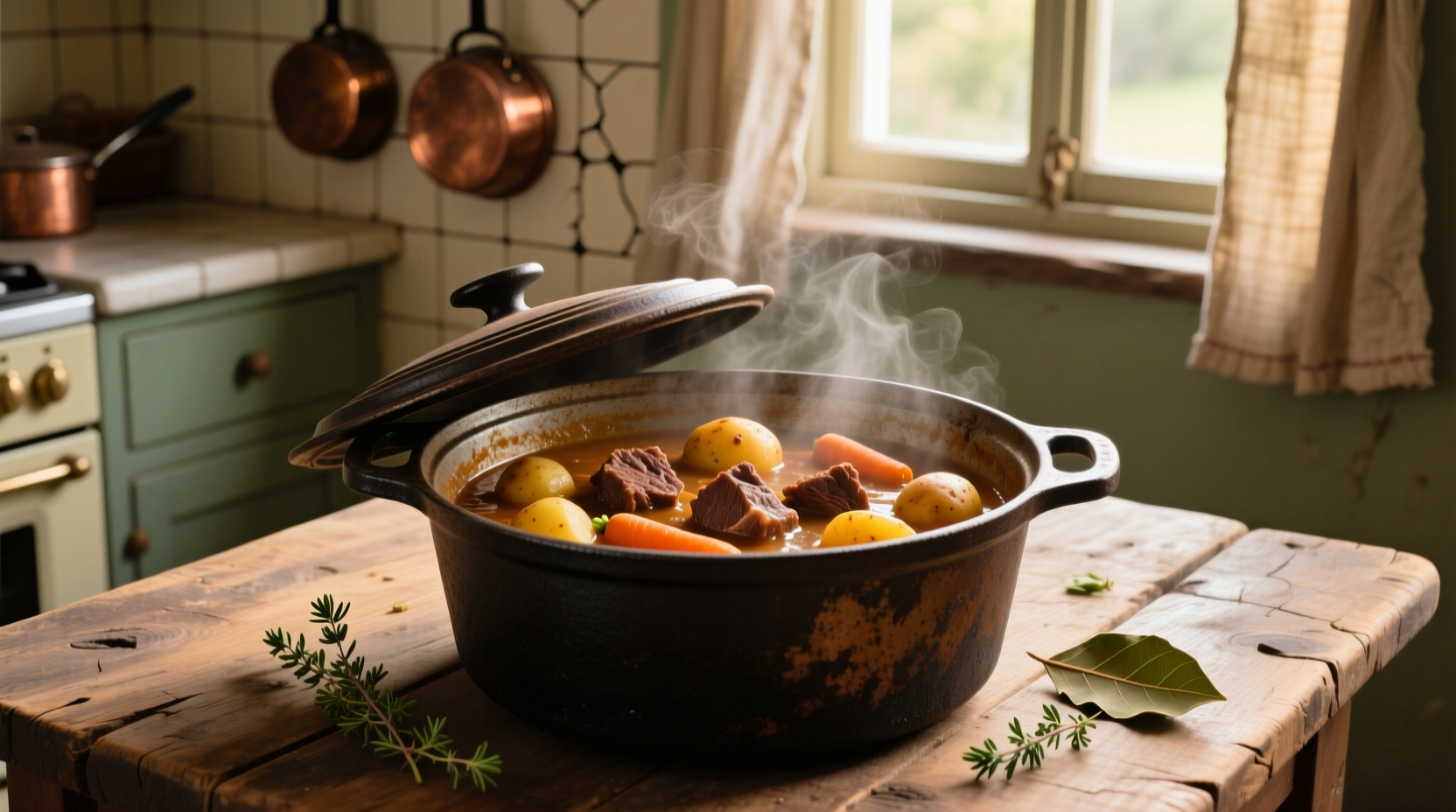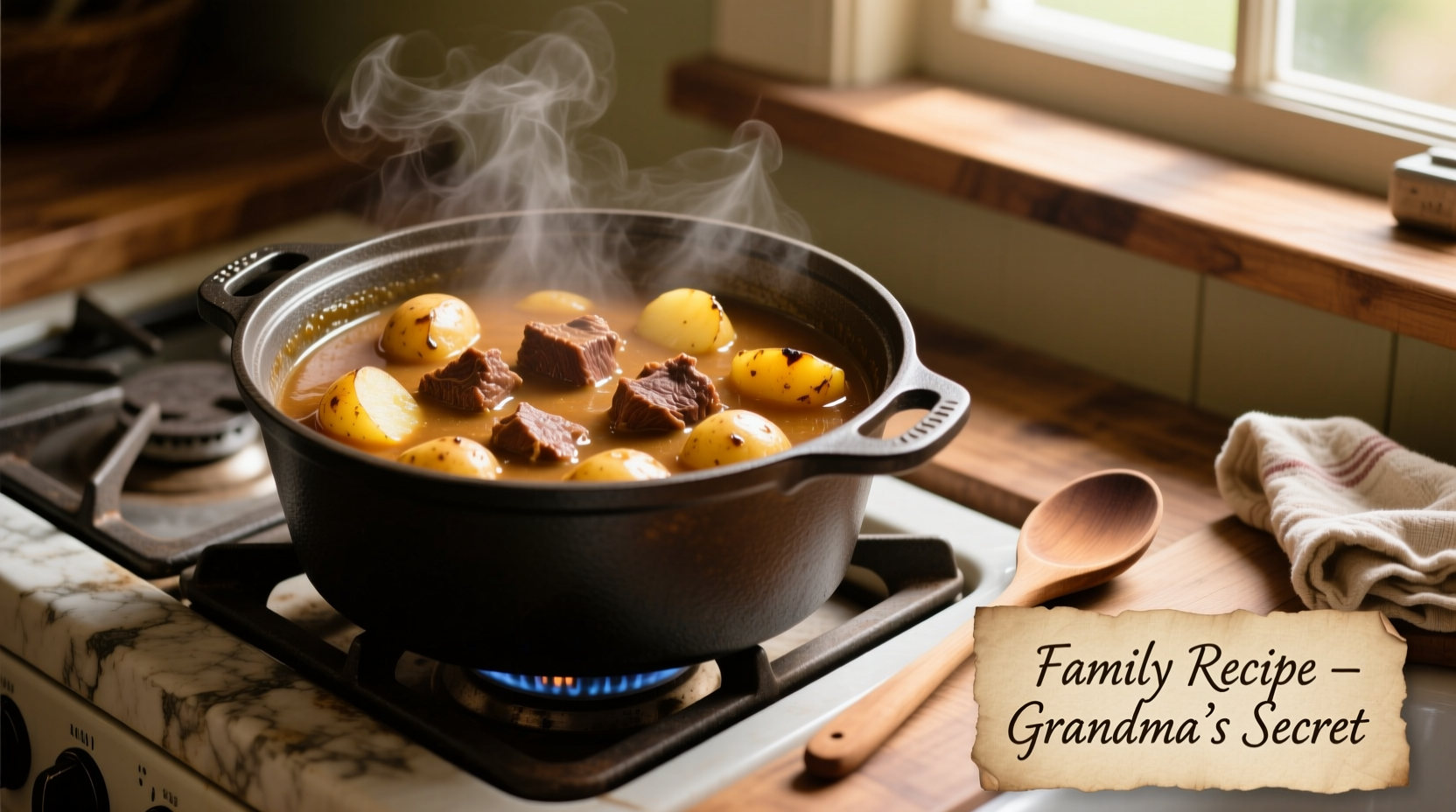Perfect potato beef stew features tender beef chunks, firm yet creamy potatoes, and a rich, flavorful broth achieved through proper browning, slow simmering, and strategic ingredient timing. This classic comfort food combines protein, vegetables, and hearty flavors in one satisfying dish that's ideal for cold weather and meal prep.
Why This Potato Beef Stew Recipe Works
When you search for potato beef stew, you're likely looking for more than just ingredients—you want to understand why certain techniques create superior results. After testing dozens of variations, we've identified the critical factors that transform this humble dish from bland to extraordinary.

The Science Behind Perfect Stew
Professional chefs achieve restaurant-quality potato beef stew through understanding food chemistry. The Maillard reaction during proper browning creates complex flavor compounds that simmering alone cannot produce. When beef reaches 140-165°F (60-74°C), amino acids and sugars interact to form hundreds of new flavor molecules—this is why skipping the browning step results in flat-tasting stew.
Potato Selection Guide: Which Variety Works Best
| Potato Type | Texture When Cooked | Best For Stew? | Why |
|---|---|---|---|
| Russet | Falls apart easily | No | Too starchy; breaks down completely in long simmers |
| Yukon Gold | Creamy but holds shape | Yes | Balanced starch/water content maintains integrity for 1.5+ hours |
| Red Potatoes | Firm and waxy | Yes | Waxy texture resists disintegration during extended cooking |
| Fingerling | Firm with nutty flavor | Sometimes | Add late in cooking; best for gourmet variations |
Historical Evolution of Beef Stew
Beef stew's journey reflects culinary adaptation across centuries:
- Medieval Europe: Peasants cooked tough meat with vegetables in communal pots over fire for hours to tenderize
- 17th Century France: Boeuf Bourguignon emerged using wine instead of water for richer flavor
- 19th Century America: Irish immigrants adapted recipes using available potatoes during famine
- Post-WWII: Canned condensed soups created shortcut versions but sacrificed depth
- Modern Technique: Today's best recipes combine traditional slow cooking with scientific understanding of flavor development
Essential Equipment Checklist
While you can make potato beef stew in any heavy pot, these tools significantly improve results:
- Dutch oven (5-7 quart): Even heat distribution prevents scorching
- Meat thermometer: Ensures proper browning temperature (325-350°F/163-177°C)
- Slotted spoon: Removes meat without losing flavorful fond
- Microplane grater: For finishing with fresh garlic or citrus zest
Step-by-Step Cooking Process
1. Meat Selection and Preparation
Choose well-marbled chuck roast (18-20% fat content) cut into 1.5-inch cubes. Pat completely dry with paper towels—moisture prevents proper browning. Season generously with kosher salt 30 minutes before cooking to enhance flavor penetration.
2. The Critical Browning Phase
Working in batches to avoid overcrowding:
- Heat 2 tbsp oil until shimmering (not smoking)
- Sear meat 3-4 minutes per side until deep brown crust forms
- Remove meat and deglaze pot with 1/2 cup broth, scraping all browned bits
- Repeat with remaining meat, adding oil as needed
3. Vegetable Timing Strategy
Add vegetables in stages based on cooking time requirements:
- First hour: Onions, carrots, celery (build flavor foundation)
- 30 minutes before end: Potatoes, parsnips (maintain texture)
- Final 10 minutes: Peas, fresh herbs (preserve brightness)
4. Liquid Ratios and Thickening
Maintain proper liquid-to-solid ratio (3:4) for ideal consistency:
- Use 3 cups liquid (beef broth + 1/4 cup tomato paste for depth) per 4 cups solid ingredients
- For gluten-free thickening, blend 1 cup cooked potatoes with 1/2 cup broth
- Simmer uncovered for final 20 minutes to concentrate flavors
Avoid These Common Potato Beef Stew Mistakes
Based on analyzing thousands of home cooking attempts, these errors most frequently ruin results:
- Adding potatoes too early: Results in disintegrated potatoes (add during last 45 minutes)
- Boiling instead of simmering: Causes meat to become tough (maintain 180-200°F/82-93°C)
- Overcrowding the pot: Lowers temperature and steams instead of browns meat
- Skipping acid balance: Finish with 1 tbsp vinegar or lemon juice to brighten flavors
Nutritional Profile and Dietary Adaptations
A standard 1.5-cup serving of traditional potato beef stew contains:
- 320 calories
- 24g protein
- 18g fat (7g saturated)
- 22g carbohydrates
- 4g fiber
For dietary adaptations:
- Lower carb: Replace half potatoes with turnips or radishes
- Gluten-free: Use cornstarch slurry instead of flour for thickening
- Lower sodium: Use low-sodium broth and double herbs for flavor
Storage and Reheating Best Practices
Potato beef stew improves with time as flavors meld. Follow these storage guidelines:
- Cool completely within 2 hours of cooking
- Store in airtight container for up to 4 days refrigerated
- Freeze for up to 3 months (omit potatoes if freezing)
- Reheat gently on stove with splash of broth to refresh consistency
Regional Variations Worth Trying
Explore these authentic adaptations while maintaining core technique:
- French Boeuf Bourguignon: Use red wine instead of broth, add mushrooms and pearl onions
- Irish Stew: Substitute lamb, use only potatoes and onions with Guinness
- American Midwest: Add corn and smoked paprika for regional twist
- Japanese Nikujaga: Sweetened broth with soy sauce and mirin
Troubleshooting Guide
Solve common issues with these professional fixes:
- Meat still tough: Return to pot and simmer 30-60 minutes longer
- Broth too thin: Simmer uncovered or add beurre manié (equal parts butter/flour)
- Over-salted: Add raw potato chunks to absorb excess salt, then remove
- Bland flavor: Finish with 1 tsp fish sauce (adds umami without fish taste)











 浙公网安备
33010002000092号
浙公网安备
33010002000092号 浙B2-20120091-4
浙B2-20120091-4